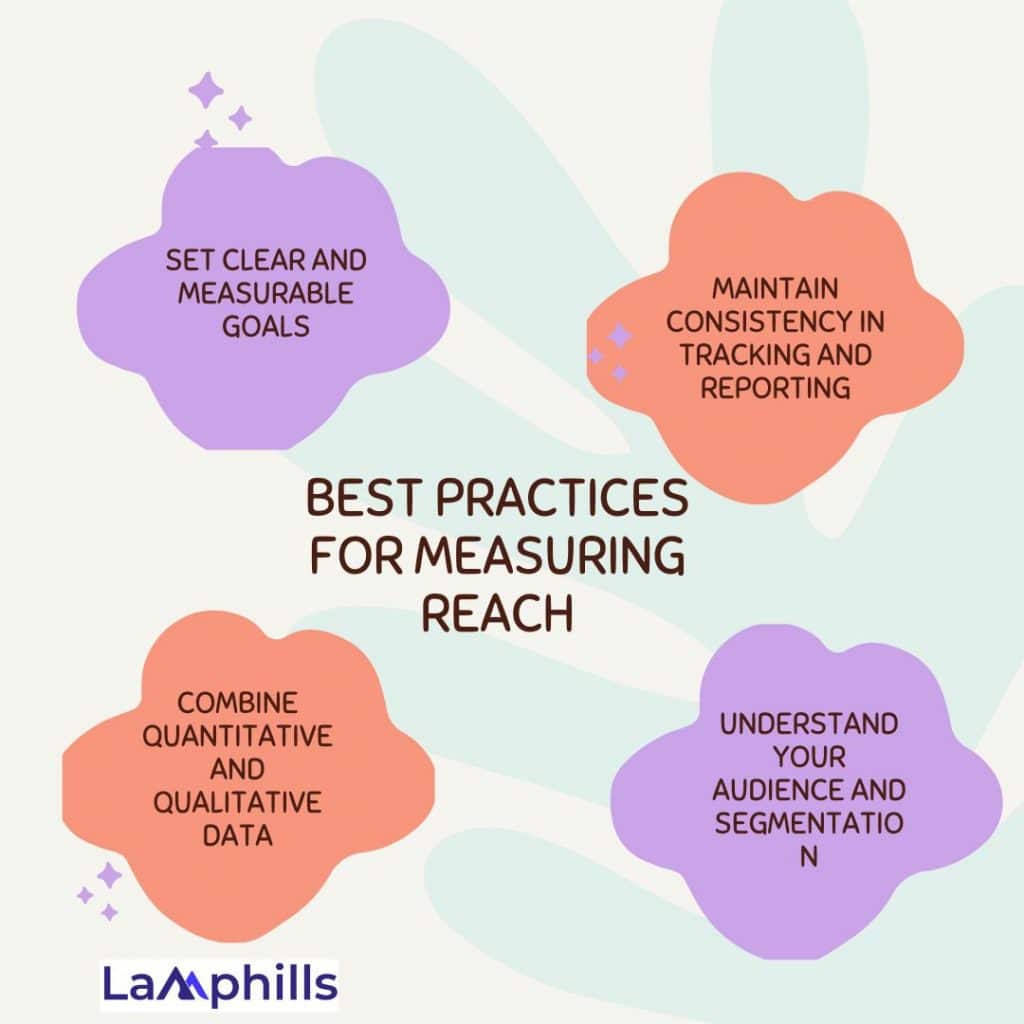While working on a campaign for a local bookstore, we launched a massive social media drive, sent out newsletters, and even hosted a few local events. After all this effort, the big question was: how far did our message really go? We saw the need to understand and measure our reach to ensure we were getting the right results. And with the right methods and tools, we were able to drive better engagements. Measuring your reach helps you review your marketing strategies and ensure you’re getting the most out of your campaigns. Here, I’ll show the best practices for measuring reach, including tools to streamline the process.
Key Points
- Reach refers to the total number of unique individuals who have seen your content. It differs from impressions, which count the total number of times your content is displayed.
- Your reach source can be organic, paid or viral
- You can measure your reach using website analytics, social media analytics, email marketing metrics, and advertising metrics.
What is Reach?
Reach is a fundamental concept in marketing. It refers to the total number of unique individuals who have seen your content. It’s quite different from impressions, which count the total number of times your content is displayed, regardless of whether the same person sees it multiple times (more on this later). You can think of reach as the breadth of your audience and impressions as the depth of their engagement.
Understanding this concept helps you monitor the effectiveness of your campaigns. If you’re putting effort into creating content, you want to know how many people it’s actually reaching.
There are different types of reach, and I’ll explain them going forward.
Types of Reach
#1. Organic Reach

Organic reach refers to the number of people who see your content without paid promotion. An example of this is a post on Facebook that’s seen by your followers or shared by them to their network. Organic reach is important for genuine engagement and credibility. When I started, my goal was to maximize organic reach by creating posts that resonated with our audience. Watching those shares and likes grow organically felt incredibly rewarding.
#2. Paid Reach
Sometimes, you need to promote your content through paid advertising like social media ads or Google Ads. The reach from this sort of advertising is known as paid reach. In one campaign, we decided to invest in Facebook Ads to reach a broader audience. The results were staggering; our reach doubled compared to organic efforts alone. Paid reach is a powerful tool, especially when launching new products or targeting a specific demographic.
#3. Viral Reach
Viral reach occurs when your content is shared rapidly and extensively by users, reaching a much larger audience. This happened once when a tweet from our campaign was picked up by a local celebrity. The engagement skyrocketed, showing the potential of viral reach. While it’s unpredictable, creating shareable, compelling content can increase your chances of going viral.
Why is Reach Important In Marketing?

The main goal of every marketing campaign is to increase brand recognition and acquire new leads. Thus, measuring reach should be among your priorities as a marketer. You should be able to track the performance of your marketing efforts and understand how they convert.
Measuring marketing reach allows companies to make informed decisions. This metric tells whether a campaign is worth the investment or not. Thus, you can minimize the risks of investing in low-performing channels.
In addition, marketing reach lets you analyze the performance of your campaign. If your reach is high, but the conversion rate is low, you need to discover why your post doesn’t work as it should. It can be related to the wrong audience or an irrelevant advertising message. You should consider reach and impressions for a general view of your campaign performance.
I said earlier that reach is different from impressions, although they are closely related. Here’s an overview of the difference between the two:
Reach vs Impressions
These KPIs are closely connected but slightly different. Reach shows the number of people likely to see your campaign. It doesn’t mean they have interacted with it. It even provides no guarantees that a user will read your message. Impressions mean the number of times your ad or post was displayed on users’ screens. This also doesn’t guarantee any interactions. You should also remember that impressions are not unique.
For example, you are creating an Instagram post to reach all your followers, but only a part of them will see it. This part or percentage makes up your marketing reach. So, these are unique people who view your content. The number of times users see your post makes your impressions. So, this metric is higher, as a rule. A single user can see your post in their feed, on a friend’s Story, or via a link shared by their friend. These three views will count as three impressions, while the marketing reach of a post will be one, meaning one unique viewer.
Now that you know why marketing reach matters, let’s discuss how to measure the metric.
Methods to Measure Reach
Here are some ways you can measure reach:
#1. Social Media Analytics
Social media platforms provide effective analytics tools to measure reach. Facebook Insights, Twitter Analytics, and LinkedIn Analytics are really invaluable. They show you how many unique users viewed your posts and help you understand which content resonates the most. I regularly use these tools to tweak our social media strategy and ensure our message is effectively reaching our audience.
#2. Website Analytics
Google Analytics is another powerful strategy for measuring reach. By tracking unique visitors and page views, you can see how many people visit your site. Understanding referral traffic—where your visitors are coming from—helps tailor your outreach efforts. I remember a campaign where Google Analytics revealed a surprising amount of traffic from a niche forum. This insight allowed us to engage more deeply with that community.
#3. Email Marketing Metrics
Email marketing platforms like Mailchimp and Constant Contact provide metrics such as open rates and click-through rates, which help measure reach. A high open rate indicates that your subject lines are effective, while click-through rates show engagement with your content. In one instance, tweaking our email subject lines based on these metrics led to a 20% increase in our open rates.
#4. Advertising Metrics
Ad platforms like Google Ads and Facebook Ads offer detailed insights into reach. Metrics like impressions, unique reach, and frequency help gauge how many people your ads are reaching and how often. Running a targeted ad campaign for a client, we could see exactly how many new users were exposed to their brand, fine-tuning our strategy for even better results.
Tools to Measure Reach

It can be overwhelming to want to do all the work of measuring reach alone, but it’s easier when you have the right tools. Here are some tools that can help you measure reach effectively:
- Google Analytics – Tracks website traffic and user behaviour.
- Hootsuite – Manages social media accounts and provides detailed analytics.
- Sprout Social – Offers social media management and analytics.
- SEMrush – Provides SEO and competitive analysis.
Each tool has its strengths. For instance, I use Hootsuite to manage multiple social media accounts simultaneously and Sprout Social for deeper analytics and reporting. A comparison table can help you decide which tools are best suited for your needs.
| Tool | Features | Best For |
| Google Analytics | Website traffic, user behavior | Comprehensive web analytics |
| Hootsuite | Social media management, analytics | Managing multiple accounts |
| Sprout Social | Social media analytics, reporting | In-depth social media insights |
| SEMrush | SEO, competitive analysis | Competitive research |
Best Practices for Measuring Reach

#1. Set Clear and Measurable Goals
You should be clear on what you want to achieve with your marketing campaign. If you don’t know what you’re aiming for, you won’t know what to do with the information you’re getting. Whether it’s increasing your social media following or driving traffic to your website, it’s important to have specific, measurable objectives. In one campaign, our goal was to increase newsletter sign-ups by 20%. With this target in mind, we could track progress and adjust our strategies accordingly.
#2. Maintain Consistency in Tracking and Reporting
Consistently tracking and reporting on reach metrics helps you identify trends and measure success over time. Regular reports allow you to see what’s working and what’s not. I’ve found that weekly reports keep everyone on the team aligned and informed, making it easier to pivot strategies when necessary.
#3. Understand Your Audience and Segmentation
Understanding who your audience is and segmenting them appropriately can dramatically improve reach. Your content cannot be targeted at everybody, otherwise you won’t get much results. By tailoring content to specific demographics, you can engage more effectively.
#4. Combine Quantitative and Qualitative Data
While quantitative data is essential, qualitative insights provide context. User feedback, comments, and reviews help understand the impact of your content. In a recent campaign, qualitative feedback revealed that while our reach was high, the content didn’t fully resonate with our audience. With this, we were able to refine our strategy.
Challenges in Measuring Reach
We often encounter several challenges like data inaccuracy and platform limitations when measuring reach. Identifying and devising ways to overcome these challenges help us achieve our desired goals. Here are some challenges encountered with measuring reach:
#1. Data Accuracy and Reliability
Ensuring data accuracy and reliability is a common challenge. Different platforms may report metrics differently, making it hard to get a consistent picture. Cross-referencing data from multiple sources can help verify accuracy.
#2. Overcoming Platform Limitations
Each platform has its limitations in tracking and reporting. Understanding these limitations and finding ways to work around them is crucial. For instance, Instagram’s analytics are limited compared to Facebook’s, but using third-party tools can bridge this gap.
#3. Dealing with Incomplete Data Sets
Sometimes, data sets are incomplete due to various reasons like tracking errors or privacy settings. Acknowledging these gaps and adjusting your analysis methods is key. We faced this issue with a client’s email campaign, where many users had opted out of tracking. Adjusting our metrics to account for this gave us a more realistic view of our reach.
#4. Balancing Reach with Other Important Metrics
While reach is important, it’s just one part of the equation. Balancing reach with engagement, conversion, and other metrics provides a holistic view of your campaign’s effectiveness. I often remind my team that a broad reach means little if it doesn’t lead to meaningful engagement.
How Do You Calculate Effective Reach In Marketing?
While most media analytics will automatically give you the numbers themselves, you can calculate your market reach by dividing impressions by frequency.
How Do You Calculate the Reach Rate?
To calculate reach rate, divide the number of unique users who have seen your content (reach) by the total number of followers or audience size, then multiply by 100 to get a percentage. The formula is:
{Reach Rate} = {Reach}\ {Total Audience} times 100%
How Do You Measure Potential Reach?
You can measure potential reach by estimating the maximum number of unique individuals who could see your content. This includes your current followers or subscribers, the audience of influencers or partners sharing your content, and targeted demographics through paid advertising. Tools like social media analytics and advertising platforms provide these estimates.
What Is A Good Reach Percentage?
A good reach percentage varies by platform and industry, but generally, a reach of 5-20% of your total audience is considered effective on social media. For email marketing, an open rate of 20-30% is good. Benchmarks can differ, so you must compare against industry standards and past performance.
What Is An Example Of Reach Marketing?
Reach marketing involves strategies to maximize the number of unique people who see your content. An example is a social media campaign using targeted Facebook ads to promote a new product. The ads are shown to a specific demographic, expanding the brand’s visibility to a broad audience.
In Conclusion,
Measuring reach is an essential aspect of any marketing or PR strategy. By understanding and leveraging different types of reach, using the right tools, and following best practices, you can significantly improve your campaign’s effectiveness. The challenges are real, but with consistent effort and strategic adjustments, you can overcome them.
Now that you have a comprehensive understanding of how to measure reach, it’s time to put these strategies into practice. Start by setting clear goals, consistently track your metrics, and don’t forget to balance reach with engagement and conversion metrics. Share your experiences and any questions you have in the comments below. And if you found this article helpful, check out our other resources on optimizing your marketing strategies!
Related Articles
- Impressions vs Reach in Different Channels Explained!
- What Is A Contact Database? A Guide to Building Your Own
- How Much Do Social Media Influencers Make? Income Breakdown
- Monitoring Online Content: How To Do This In 5 Steps






